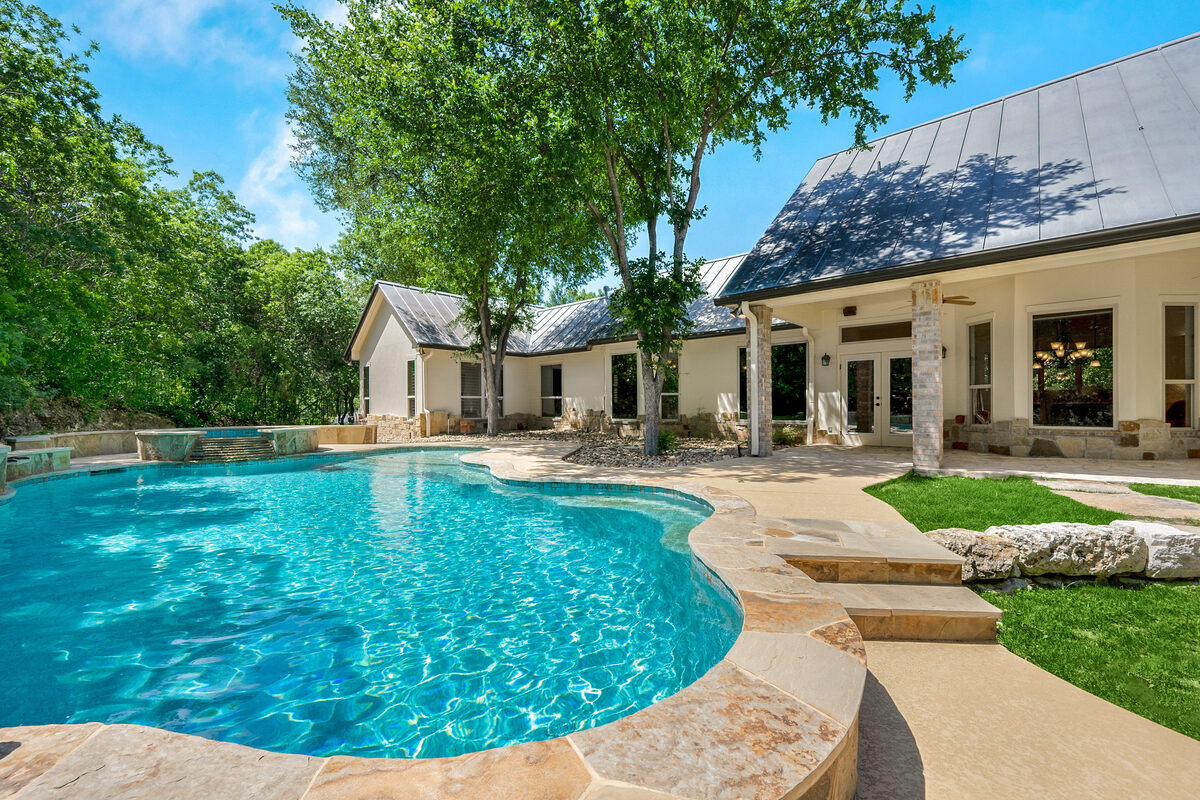Tapping into the equity of your home to finance a large project such as building a pool can be possible thanks to a Home Equity Line of Credit (HELOC).
In this article, I’ll review the process of financing home improvement projects such as installing a pool and this way you can figure out if using a HELOC is a good strategy for you.
What is a Home Equity Line of Credit (HELOC)
A Home Equity Line of Credit or HELOC for short, is a type of mortgage that works as a revolving line of credit.
Unlike a regular fully amortized mortgage loan where you make a fixed monthly payment that goes towards principal and interest, a HELOC is a line of credit. This means that you have a limit but you may use as much as you want.
Think of a HELOC as having a credit card.
When you have a credit card, you also have a limit but from there, you access as much of it as you need. Your payment will be based on the interest rate and the balance you owe.
Likewise, if you don’t have a balance, then you won’t incur and interest expenses or monthly payments.
If you’re using a HELOC to finance installing a pool, you can draw as much as you want out of the line of credit up to the limit.
Most Common HELOC Terms Available
Home Equity Line of Credit lenders will offer different terms to choose from as far as for how long you can access the line and also, how long you have to repay it.
The draw period is the period of time that you have to tap into the line of credit. The most common draw period that lenders offer is 10 years. Other terms available are 3 and 5 years. Sometimes, lenders can offer lower interest rates with lower draw periods terms.
The repayment period is the time you have to pay the outstanding balance of the line of credit. The most common repayment periods with HELOCs are 20 and 30 years. The shorter the repayment period, the lower the rate lenders may be able to offer you.
How do payments work on a HELOC?
Unlike regular mortgages where a fully amortized principal and interest payment is required, the minimum HELOC payment required is interest only during the draw period.
This means that if you only make the minimum required payment, your balance will not change. Thus, you’ll want to add another payment (known as a principal payment), in order to bring the balance down.
For example, on a $100,000 balance HELOC with an interest rate of 9.99%, the interest only payment would be $823.50/month.
Minimum credit scores and Requirements for Getting Approved for a HELOC
Getting approved for a HELOC isn’t that different from qualifying for a regular mortgage — lenders still look at your credit score, income, debt, and available home equity.
Let’s break down the most common qualifiers so that you know what would be expected from most lenders:
Credit Scores
Most lenders will want to see a minimum credit score of around 680, but if your credit is over 700, you’ll usually get better rates and terms.
Don’t be surprised if certain banks will require you to have stronger scores, above 720.
At Andes Mortgage, we offer HELOCs with credit scores as low as 680.
Equity Position
The amount of your equity will be important to get your HELOC approved.
Depending on the lender or bank that you choose to go with, the maximum loan-to-value, will be anywhere between 80% and 90%. This means that the combined first lien amount and the HELOC may not exceed 80 or 90% of the value of your property.
Your lender will determine if your property will need a full appraisal or an AVM or a Desktop Appraisal in order to gauge the value of your home.
Debt to Income Ratio
Your debt-to-income ratio or the maximum percentage of your gross monthly income that goes towards paying debt must be below 45%.
You’ll need to show proof of income and a two-year employment or self-employment history.
Things to Keep in Mind Before Using a HELOC
Before you dive in (haha, get it?), here are a few important things to think about when getting a HELOC.
Can you afford the additional payment?
Pools are not cheap home improvements and if you finance the entire cost with a HELOC, you could be looking at another mortgage of $100,000 – $200,000 depending where you are.
This is another payment that you’ll have on top of your current loan. Remember that nowadays property taxes and home insurance rates are on the rise.
Consider how long you plan to stay in the home.
If you’re planning to sell soon, you may not fully enjoy the benefits of your new pool—or have enough time to justify the cost.
Your home is the collateral.
A HELOC is secured by your house, which means missing payments could put you into foreclosure. A HELOC is a mortgage, and it is a lien against your house.
Rates can fluctuate.
HELOCs usually have variable interest rates. That means your monthly payment can go up or down depending on the market. Ask your lender if a fixed rate HELOC is a better solution or consider a cash out refinance or HELOAN instead.
How Much Does It Cost to Install a Pool?
Installing a pool isn’t cheap—but it’s also one of those upgrades that can genuinely change your lifestyle and even boost your home’s value when done right.
On average, a standard in-ground pool can cost anywhere between $50,000 and $100,000, depending on the size, materials, and type of finishes you choose. If you’re going all-in with extras like waterfalls, lighting, or a spa combo, it’s not unusual to see quotes upwards of $150,000 or more.
Remember that this can also change depending on your area.
For above-ground pools, you’re looking at a much smaller investment—typically between $5,000 and $15,000, depending on how elaborate you want to get.
Other Options to Finance a Pool Besides a HELOC
A HELOC isn’t the only way to finance your dream pool. These are some other options that you may want to consider if you feel like a HELOC is not the right thing for you.
Home Equity Loan
This is another second lien that uses your home as collateral and gives you a lump sum at a fixed rate. So think of it as having a personal loan.
You’ll borrow a certain amount and your monthly payment and rate never changes.
Home Improvement Personal Loan
Home improvement loans can be faster and easier to get approved for than a HELOC but interest rates are usually higher.
You can also ask your pool builder if they offer in-house financing or work with lenders that specialize in pool projects. These can sometimes come with promotional rates or deferred payments.
Cash-Out Refinance
A cash out refinance will give you the ability to tap into the equity of your home with just one mortgage and one interest rate. This is the most typical way that people use to tap into their home equity.
However, remember that a cash-out refinance will pay off the mortgage that you have on your home. Therefore, if you have a low interest rate, you’ll lose it as this loan will replace the existing one.
Want to get started with a HELOC for your Pool Project?
We help our clients get HELOCs here at Andes Mortgage!
With options ranging from primary to investment homes, we can help your HELOC needs.
Give us a call at 770-740-4050 or click this link to book a personalized consultation and find out if a HELOC is the right program for you.





